Install the app
How to install the app on iOS
Follow along with the video below to see how to install our site as a web app on your home screen.
Note: This feature may not be available in some browsers.
You are using an out of date browser. It may not display this or other websites correctly.
You should upgrade or use an alternative browser.
You should upgrade or use an alternative browser.
All about railways in Indonesia (beware of HD pics)
- Thread starter aryadwi_ef641030
- Start date
aryadwi_ef641030
Wait for 5 minutes
After spending stay at Yogyakarta for almost 3 day, I decided to throw some photos taken by myself:
1. Brand new freight car
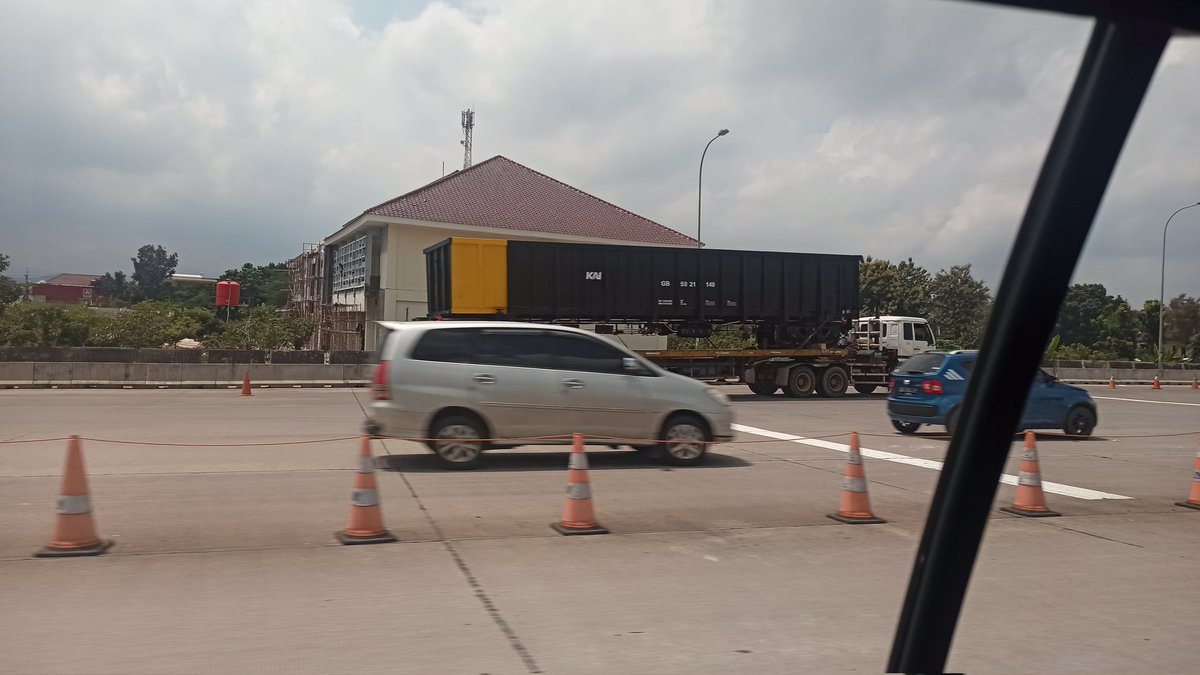
This photo was taken on December 31st, 2021, when I encountered one of brand new coal gondolas ordered by Indonesian Railways to the state-owned PT INKA was transported by truck. While some of coal gondolas were transported through the rail as a special train (with the destination before being loaded to cargo ship was Tanjung Priok station), the majority were loaded into trucks. As the unloading facilities at Tarahan station are composed of rotary car dumper (RCD) only, the new coal gondolas are of course designed for use on RCD only.
2. Post-electrification days
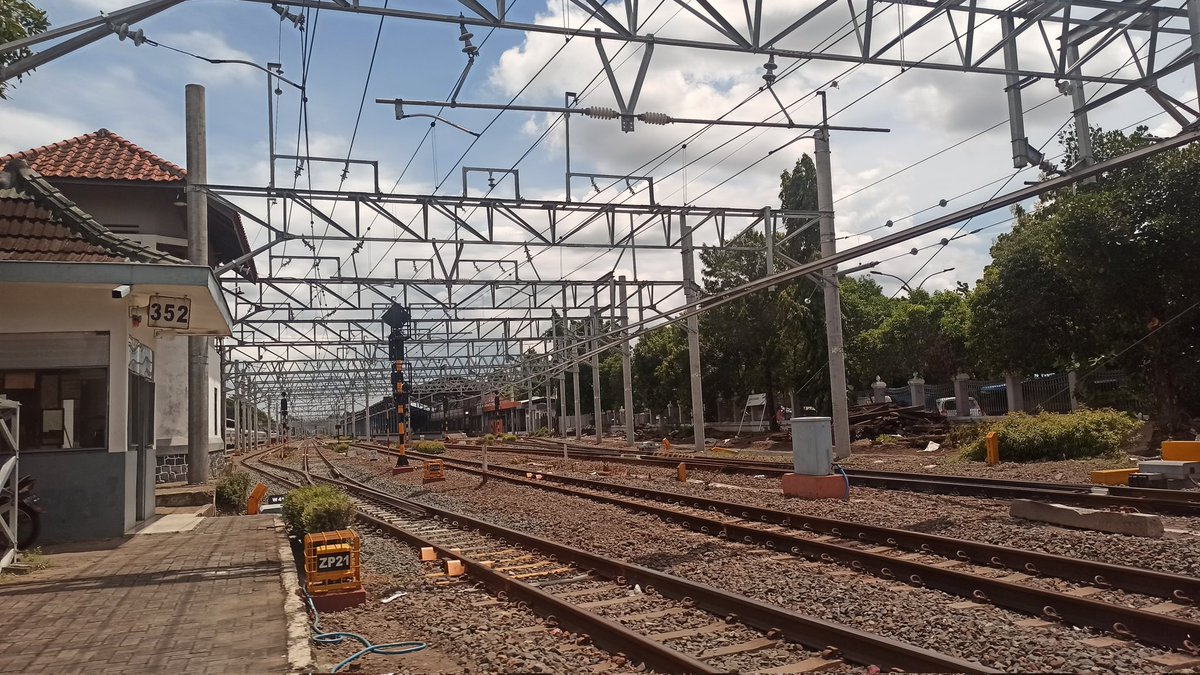
This is the photo of west end of Lempuyangan station after the completion of electrification on February 2021. Due to low clearance caused by presence of large roof that covered track #1 to #3, rigid overhead lines were used instead of the usual flexible catenary type. The signals were also replaced with the new ones manufactured by LEN Railway Systems (LRS, subsidiary of state-owned PT. LEN Industri).
Regards,
Arya.
1. Brand new freight car

This photo was taken on December 31st, 2021, when I encountered one of brand new coal gondolas ordered by Indonesian Railways to the state-owned PT INKA was transported by truck. While some of coal gondolas were transported through the rail as a special train (with the destination before being loaded to cargo ship was Tanjung Priok station), the majority were loaded into trucks. As the unloading facilities at Tarahan station are composed of rotary car dumper (RCD) only, the new coal gondolas are of course designed for use on RCD only.
2. Post-electrification days

This is the photo of west end of Lempuyangan station after the completion of electrification on February 2021. Due to low clearance caused by presence of large roof that covered track #1 to #3, rigid overhead lines were used instead of the usual flexible catenary type. The signals were also replaced with the new ones manufactured by LEN Railway Systems (LRS, subsidiary of state-owned PT. LEN Industri).
Regards,
Arya.
pascalfajrin
New member
I think there are some creators who made the locomotive for Trainz 2019, but I don't know if they're here or not. I'm gonna tell them for sure so they can check this thread.hi
very beautiful Emd Export Locomotive I like it anybody Bulid in Trainz 19
Thanks Sufi Abid
I believe there's also an Indonesian Trainz screenshot somewhere here, you might wanna check it.
The rigid catenary reminds me of the old Märklin catenary found on their HO model railroads.
The new color light signals are similar to those in Queensland.
Ranger_51's Signal Kit (auran.com)
In some ways I'm sad to see the old infrastructure get replaced.
The new color light signals are similar to those in Queensland.
Ranger_51's Signal Kit (auran.com)
In some ways I'm sad to see the old infrastructure get replaced.
aryadwi_ef641030
Wait for 5 minutes
The rigid catenary reminds me of the old Märklin catenary found on their HO model railroads.
The new color light signals are similar to those in Queensland.
Ranger_51's Signal Kit (auran.com)
In some ways I'm sad to see the old infrastructure get replaced.
You're right, although if we speak about fate of old infrastructures they're naturally would be replaced with newer ones that improved everything for the future operations...
Regarding the signals, yeah they're having similarities between each other on some points. But in reality, Indonesian ones had its roots could be traced back into the Siemens-built DrS-60 signals introduced in 1960s and installed at Bandung and Solo Balapan station (both of them had been already replaced by the LRS SIL-02 signals due to aging). And speaking the unique side of Indonesian signals, the following image could say that Indonesian signals are somewhat "strange" if compared to another:

(original photo by Aldio Yudha Trisandy)
From top to bottom:
1. Speed limit indicator board - Indonesians are using "multiplied by 10" for speed limit indicator, hence the "3" means that trains are only permitted to running as fast as 30km/h (
2. Main signal lights
3. Shunting signals - because it is installed as part of the signal itself, "stop" aspect is unified with the main ones
4. Emergency signal indicator - when lit up, it would show a white triangle used to inform drivers that their trains are permitted to pass the signal at very limited speed (normally the main signal would show "stop" aspect)
And another one:

(original photo by Aldio Yudha Trisandy)
This signal had direction indicator lights, with the ones in this photo shows "right diverge".
That's interesting.
I had a hunch the number at the top of the signal indicated the speed in kph multiplied by 10. This is done in other countries as well such as Belgium and the Netherlands. Hmm... Would the Nederlandse Spoorwegen system have anything to do with your signaling and infrastructure, I wonder? The rest is very straight forward as well. The shunting signal too is used all over including over here in the US.
I do understand the reasons behind the upgrades, but nostalgia does get in the way. Where I live, Boston lost its famous signal bridge with the semaphore signals on it when South Station was upgraded for the Acela. If I find a great picture of it, I'll post it but the ones I've found are up too close to see the full bridge. I remember seeing the signals and tower still in use right up until the very end. These were the old rod and pulley kind that are found all over the world.
I had a hunch the number at the top of the signal indicated the speed in kph multiplied by 10. This is done in other countries as well such as Belgium and the Netherlands. Hmm... Would the Nederlandse Spoorwegen system have anything to do with your signaling and infrastructure, I wonder? The rest is very straight forward as well. The shunting signal too is used all over including over here in the US.
I do understand the reasons behind the upgrades, but nostalgia does get in the way. Where I live, Boston lost its famous signal bridge with the semaphore signals on it when South Station was upgraded for the Acela. If I find a great picture of it, I'll post it but the ones I've found are up too close to see the full bridge. I remember seeing the signals and tower still in use right up until the very end. These were the old rod and pulley kind that are found all over the world.
aryadwi_ef641030
Wait for 5 minutes
Though there are no direct intervention by the Nederlandse Spoorwegen itself, but the roots of Indonesian system is largely based on those in Netherlands due to its status as a former colony of Netherlands, including the right-hand running for trains, basic signalling regulations etc. Indeed there are some differences between the Dutch and Indonesian, but the remaining are still the same (including the electrification system, as Indonesia's first heavy rail electrification directly starts from 1.5kV DC just like the Dutch).
aryadwi_ef641030
Wait for 5 minutes
[NEWS]
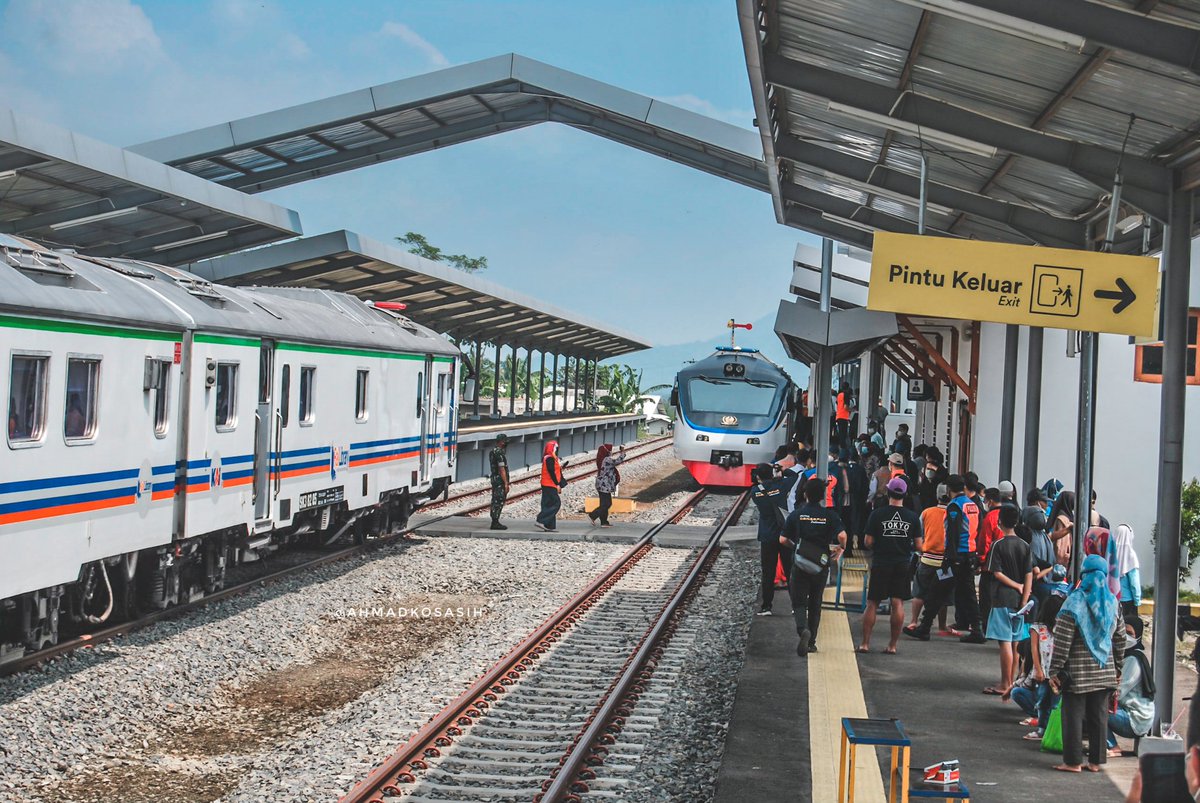
(original photo by Ahmad Kosasih)
January 6th, 2022 saw the visit by Mr. Ridwan Kamil (Governor of West Java Province) to Garut by using Inspection Train #4 (which is modified from Japanese-built MCW302 series DMU already retired from regular service), accompanied by Mr. Didiek Hartantyo (CEO of Indonesian Railways). While the main purpose of this visit was to ensure that Cikajang Line (Cibatu - Garut) is ready to back into operation in near future, Mr. Kamil also visited the site of COVID-19 vaccination event at Wanaraja station, with RailClinic + RailLibrary (also modified from MCW302 series DMU) serves as one of the room for vaccination process.
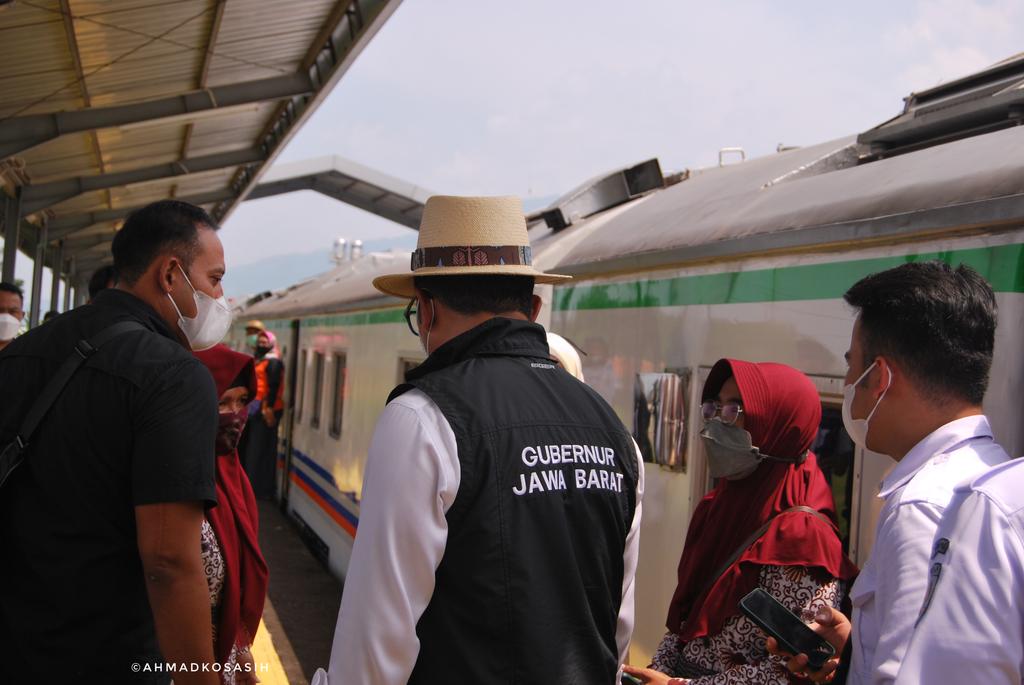
(original photo by Ahmad Kosasih)
And here is the photo of Mr. Ridwan Kamil, seen here after inspecting the RailClinic + RailLibrary DMU at Wanaraja station before continuing to Garut station. While the reopening of Cikajang Line from Cibatu to Garut was repeatedly postponed due to construction of new building for Garut station and the COVID-19 pandemic, everyone who lived along the line hoped that trains would really returns back to Cikajang Line as soon as possible.

(original photo by Ahmad Kosasih)
January 6th, 2022 saw the visit by Mr. Ridwan Kamil (Governor of West Java Province) to Garut by using Inspection Train #4 (which is modified from Japanese-built MCW302 series DMU already retired from regular service), accompanied by Mr. Didiek Hartantyo (CEO of Indonesian Railways). While the main purpose of this visit was to ensure that Cikajang Line (Cibatu - Garut) is ready to back into operation in near future, Mr. Kamil also visited the site of COVID-19 vaccination event at Wanaraja station, with RailClinic + RailLibrary (also modified from MCW302 series DMU) serves as one of the room for vaccination process.

(original photo by Ahmad Kosasih)
And here is the photo of Mr. Ridwan Kamil, seen here after inspecting the RailClinic + RailLibrary DMU at Wanaraja station before continuing to Garut station. While the reopening of Cikajang Line from Cibatu to Garut was repeatedly postponed due to construction of new building for Garut station and the COVID-19 pandemic, everyone who lived along the line hoped that trains would really returns back to Cikajang Line as soon as possible.
I am not seeing the photos above?
I'm seeing them.
aryadwi_ef641030
Wait for 5 minutes
I am not seeing the photos above?
Probably there is a problem with your connection, as I could see the photos.
aryadwi_ef641030
Wait for 5 minutes
[NEWS]
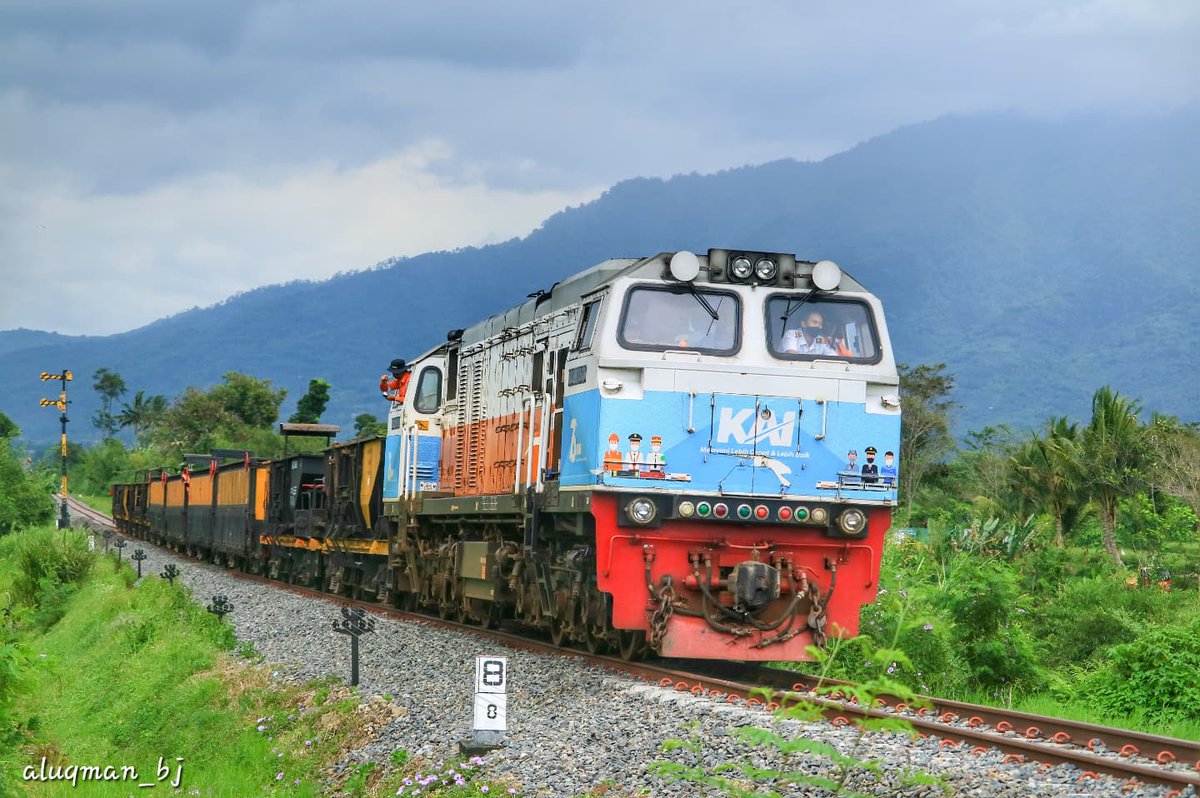
(original photo by Aluqman_bj)
A few days ago ballast spreader MoW train once again entered the Cikajang Line all the way to Garut. Because the train was loaded at Tasikmalaya station's ballast loading track, the locomotive had to change its position at Cibatu station before entering Cikajang Line. Note that the signals are still not operated, due to the fact that this line is currently still in "pending approval for reopening" condition, although the line would likely reopens in the near future.

(original photo by Aluqman_bj)
A few days ago ballast spreader MoW train once again entered the Cikajang Line all the way to Garut. Because the train was loaded at Tasikmalaya station's ballast loading track, the locomotive had to change its position at Cibatu station before entering Cikajang Line. Note that the signals are still not operated, due to the fact that this line is currently still in "pending approval for reopening" condition, although the line would likely reopens in the near future.
blueodessey
Well-known member
Thank you for interesting Documentary here,
Always enjoy a good picture with nice back story..........I have yet to make it to Indonesia, but this is a great way to see people and Countryside.........
Keep up the good work.........:wave:
Always enjoy a good picture with nice back story..........I have yet to make it to Indonesia, but this is a great way to see people and Countryside.........
Keep up the good work.........:wave:
aryadwi_ef641030
Wait for 5 minutes
Thanks for your kind words!
Actually that ballast spreader train uses a combination of ballast hopper introduced back in 1965 (the box-bodied ones) and 1984 (ordinary type), and such combination is a norm in Java divisions. Because those in that picture are owned by Bandung division (2nd Java Operational Region), they were painted with yellow color; those from other divisions had different identification color for its paintwork.
Actually that ballast spreader train uses a combination of ballast hopper introduced back in 1965 (the box-bodied ones) and 1984 (ordinary type), and such combination is a norm in Java divisions. Because those in that picture are owned by Bandung division (2nd Java Operational Region), they were painted with yellow color; those from other divisions had different identification color for its paintwork.
aryadwi_ef641030
Wait for 5 minutes
Some classical and new things *beware of my classical style for writing name of places in Indonesia:
1. Promotional poster created by Staatsspoorwegen (SS) in the Dutch East Indies period to inform passengers that the fare for boarding trains to and from any stations between Batavia (Jakarta) and Bandung was heavily discounted, with the discount applied for trains running through Purwakarta as well as Buitenzorg (Bogor).
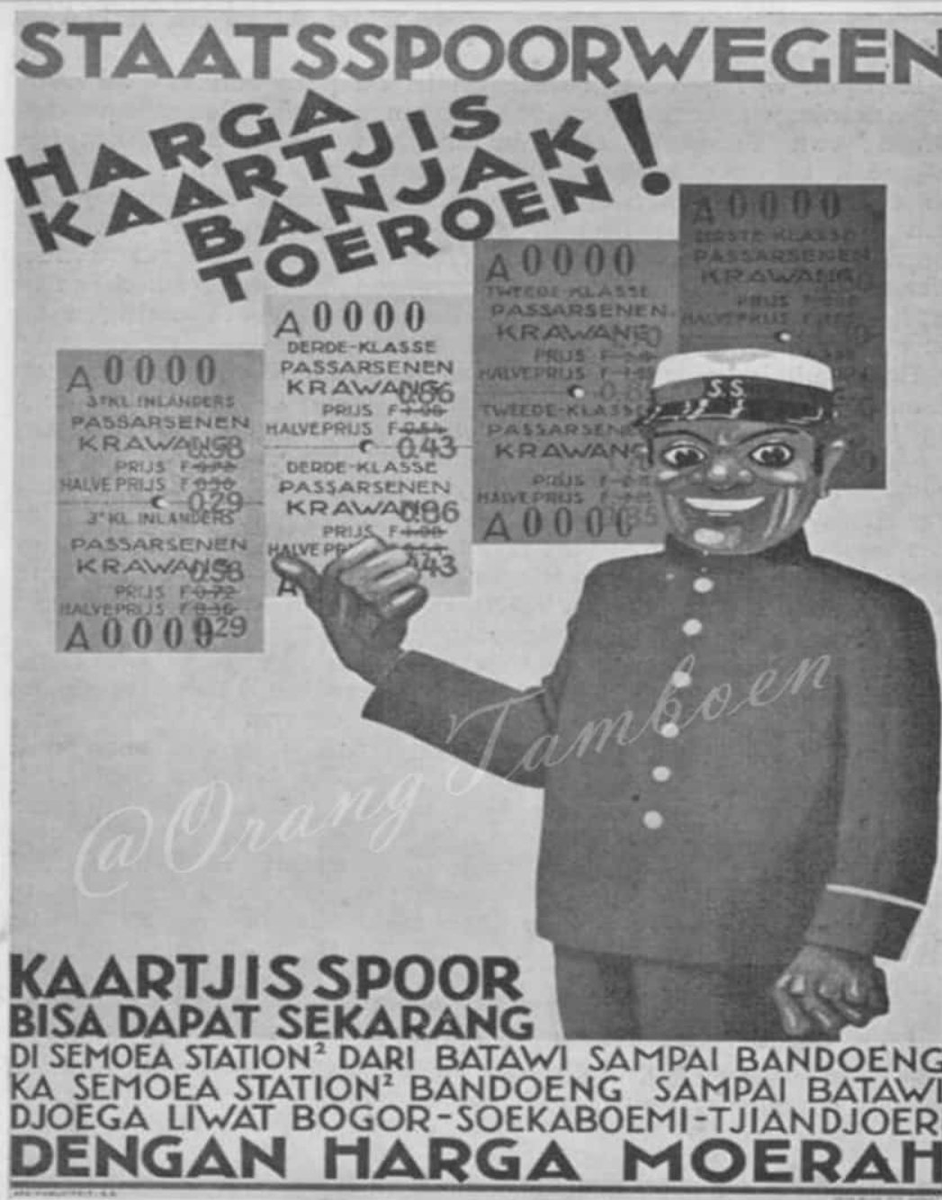
(scanned by OrangTamboen)
Of course the text includes terms that is now part of Indonesian language, like "Kaartjis" that eventually became "Karcis". Note that most of native Indonesians at that time were only permitted to board 3rd class coaches, which is the reason why 3rd class tickets are normally labeled by Dutch people with "Inlanders" (which is unfortunately considered by many native Indonesians like me as a derogatory term).
2. The reopening of Cikajang Line from Cibatu to Garut is about to become reality, as the Ministry of Transportation announced name of trains that subsidized with PSO (Public Service Obligation) on its official Instagram account, including the Cibatu - Garut local train and mid-distance train named as "Ekspres Kamojang" (Pasar Senen - Garut). This was materialized with the trial run performed by Indonesian Railways on Cibatu - Garut section, using a rake of 3rd class coaches and diesel generator-equipped dining car.
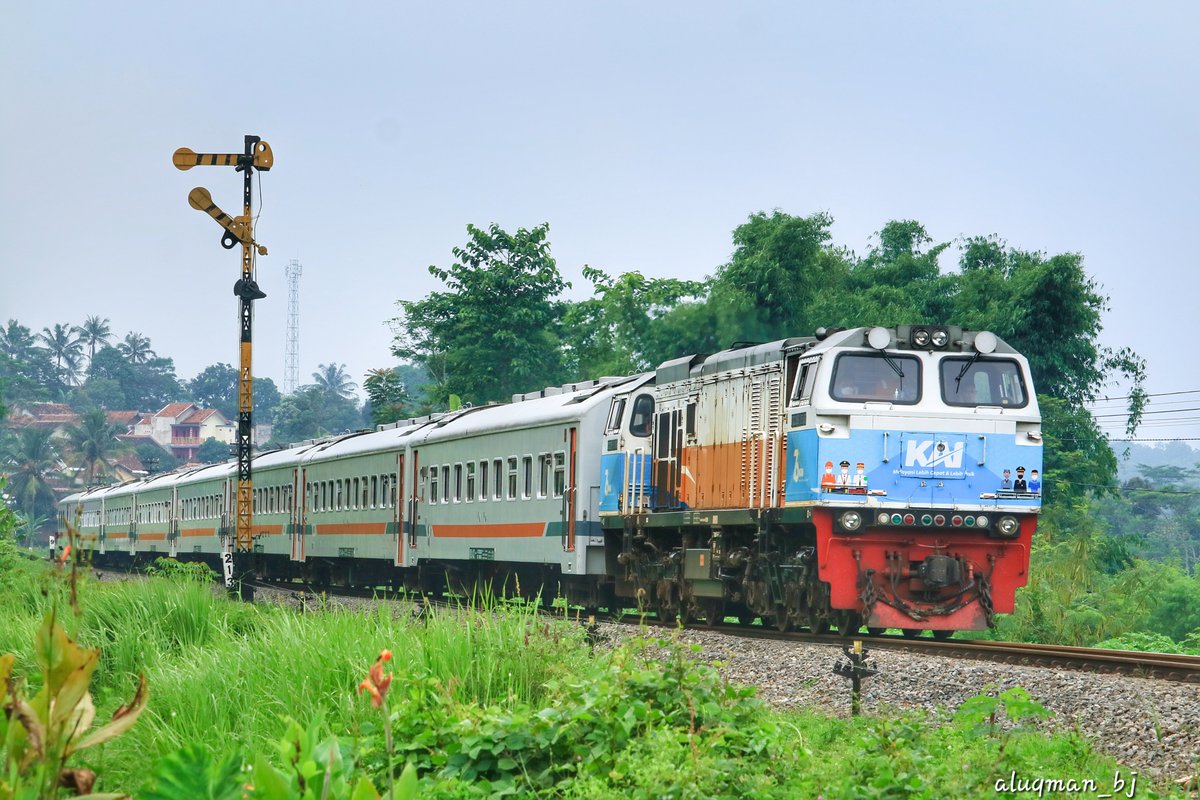
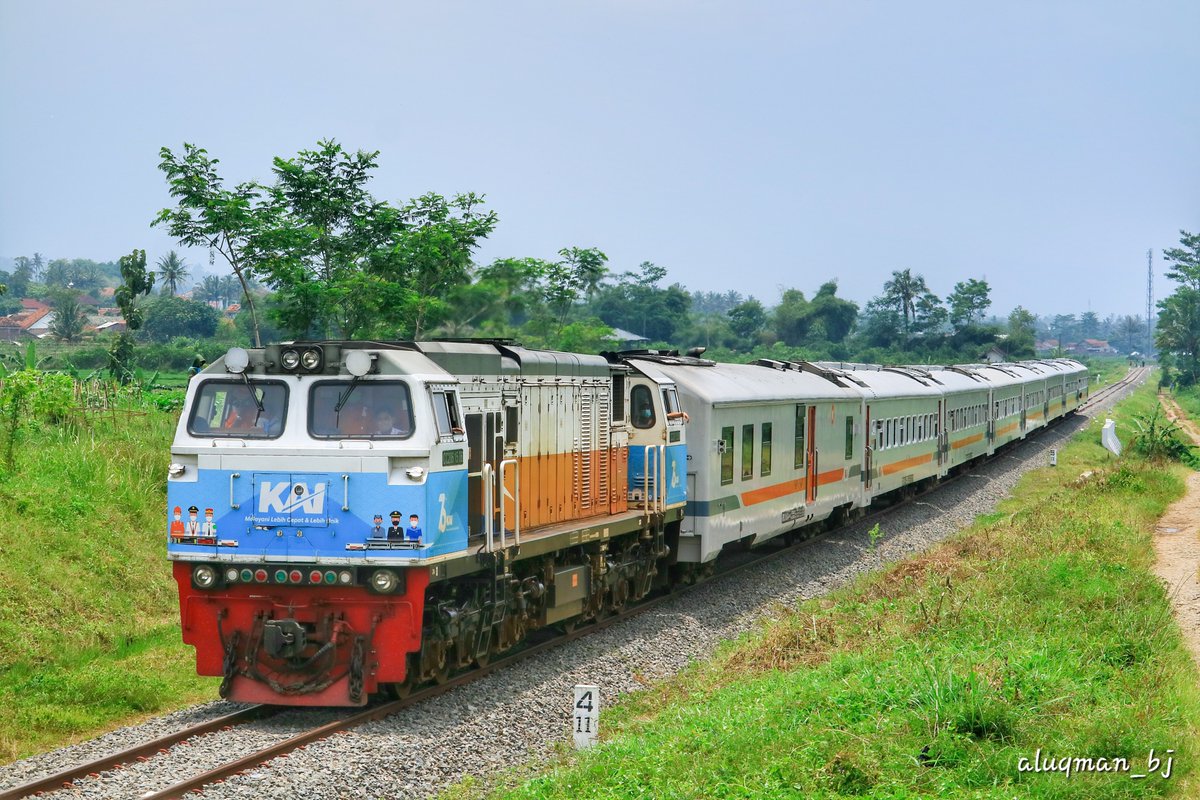
(original photos by aluqman_bj)
While the dining car is of 2016 group that featured newer window design, other coaches are part of 2014 group normally used by long distance train "Jayabaya" etc.
1. Promotional poster created by Staatsspoorwegen (SS) in the Dutch East Indies period to inform passengers that the fare for boarding trains to and from any stations between Batavia (Jakarta) and Bandung was heavily discounted, with the discount applied for trains running through Purwakarta as well as Buitenzorg (Bogor).

(scanned by OrangTamboen)
Of course the text includes terms that is now part of Indonesian language, like "Kaartjis" that eventually became "Karcis". Note that most of native Indonesians at that time were only permitted to board 3rd class coaches, which is the reason why 3rd class tickets are normally labeled by Dutch people with "Inlanders" (which is unfortunately considered by many native Indonesians like me as a derogatory term).
2. The reopening of Cikajang Line from Cibatu to Garut is about to become reality, as the Ministry of Transportation announced name of trains that subsidized with PSO (Public Service Obligation) on its official Instagram account, including the Cibatu - Garut local train and mid-distance train named as "Ekspres Kamojang" (Pasar Senen - Garut). This was materialized with the trial run performed by Indonesian Railways on Cibatu - Garut section, using a rake of 3rd class coaches and diesel generator-equipped dining car.


(original photos by aluqman_bj)
While the dining car is of 2016 group that featured newer window design, other coaches are part of 2014 group normally used by long distance train "Jayabaya" etc.
aryadwi_ef641030
Wait for 5 minutes
Nope, and most of images on latest posts are directly from Twitter that normally could be seen by everyone (unless if the owner of original tweet that contained images sets his / her account as private account). But it seems very strange, as I could see the photos by myself (even with different browser like Google Chrome etc)...
Last edited:
aryadwi_ef641030
Wait for 5 minutes
No problem! (seems there is a function within Edge browser that somewhat blocks anything from Twitter) 
Anyway, continuation of previous post:
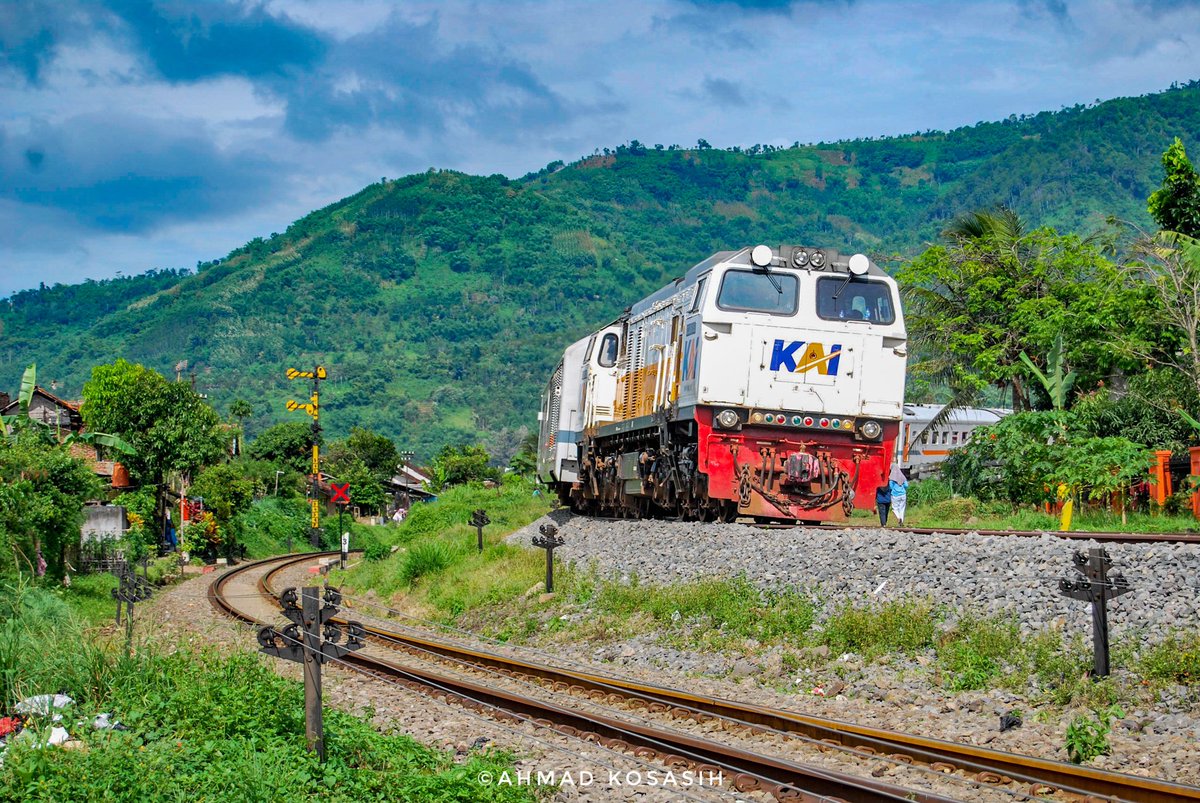
(original photo by Ahmad Kosasih)
This photo was taken near the diverging point of South Java Mainline and Cikajang Line, with a CC206 is seen here pulling the trial run consist back to Cibatu station after completing another trial run to Garut Station. According to old photos taken by Mr. Geoff Plumb back in 1973, the location of above photo is near the site where the older Krian-type roundel (disk) signal a.k.a "sinyal tebeng tipe Krian" of Cibatu station for trains from Tasikmalaya was once stood there; the ones for trains from Cikajang was located near the current B signal tower*, just beside the Cibatu locomotive depot.
*signal towers in Indonesia are identified with letters starting from A, B etc.
And this is the photo of same location, taken by Mr. Geoff Plumb in 1973:

(original photo by Geoff Plumb)
The change from roundel signal to Siemens & Halske semaphore signal itself was done in 1982 (the year when huge eruption of Mt. Galunggung occurred). Alas, the distant and home signals for trains from Cikajang Line was active for only 1 year, as the next year (1983) saw permanent closure of this line due to lack of locomotives, aging infrastructure and low ridership.
Anyway, continuation of previous post:

(original photo by Ahmad Kosasih)
This photo was taken near the diverging point of South Java Mainline and Cikajang Line, with a CC206 is seen here pulling the trial run consist back to Cibatu station after completing another trial run to Garut Station. According to old photos taken by Mr. Geoff Plumb back in 1973, the location of above photo is near the site where the older Krian-type roundel (disk) signal a.k.a "sinyal tebeng tipe Krian" of Cibatu station for trains from Tasikmalaya was once stood there; the ones for trains from Cikajang was located near the current B signal tower*, just beside the Cibatu locomotive depot.
*signal towers in Indonesia are identified with letters starting from A, B etc.
And this is the photo of same location, taken by Mr. Geoff Plumb in 1973:

(original photo by Geoff Plumb)
The change from roundel signal to Siemens & Halske semaphore signal itself was done in 1982 (the year when huge eruption of Mt. Galunggung occurred). Alas, the distant and home signals for trains from Cikajang Line was active for only 1 year, as the next year (1983) saw permanent closure of this line due to lack of locomotives, aging infrastructure and low ridership.
Similar threads
- Replies
- 4
- Views
- 457
- Replies
- 2
- Views
- 471
- Replies
- 2
- Views
- 528
